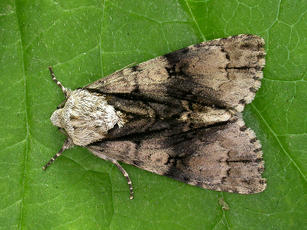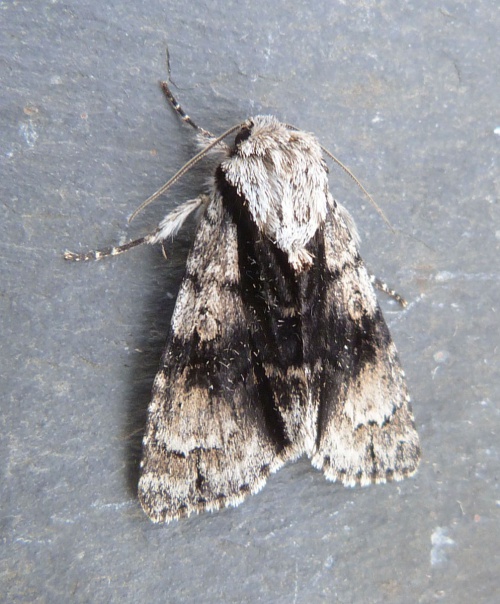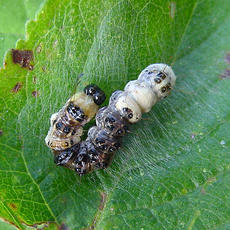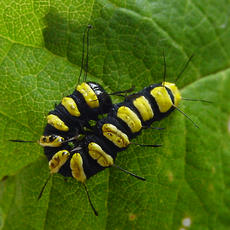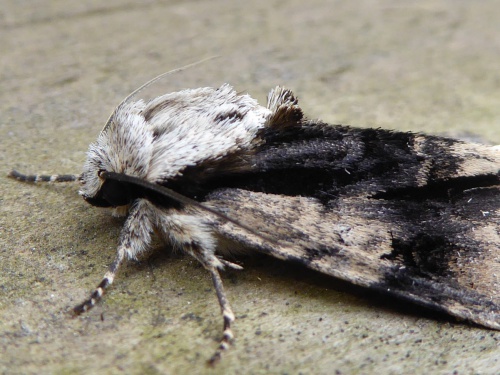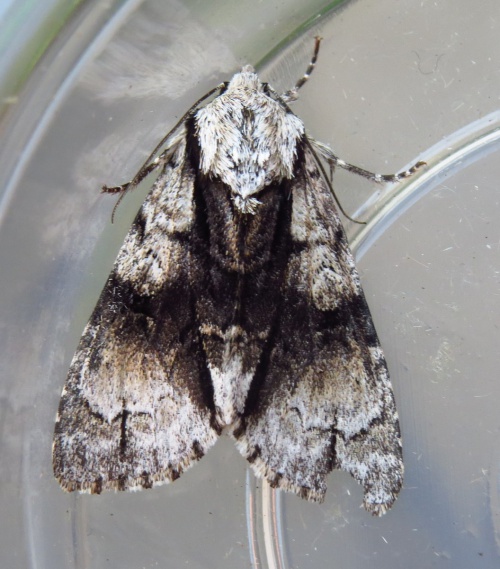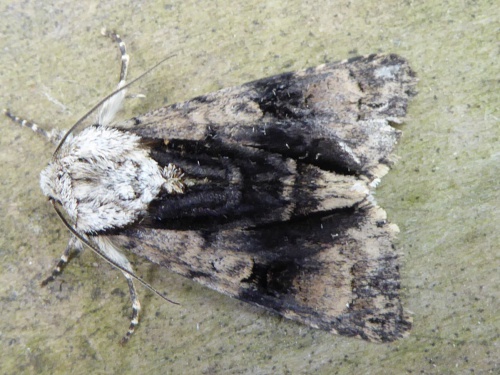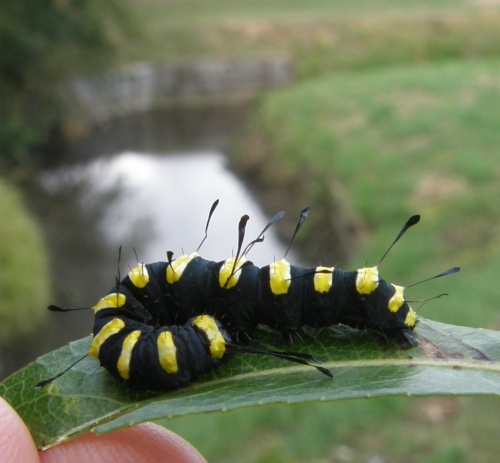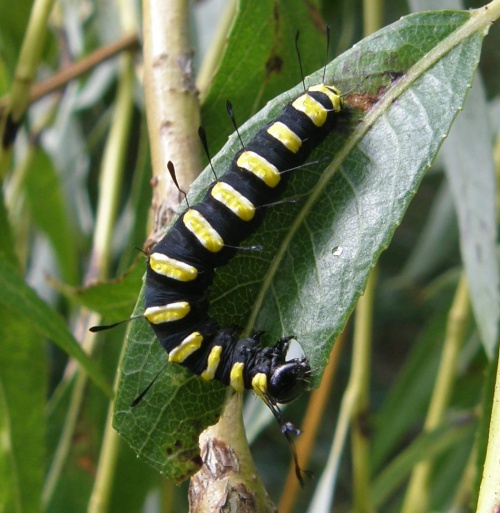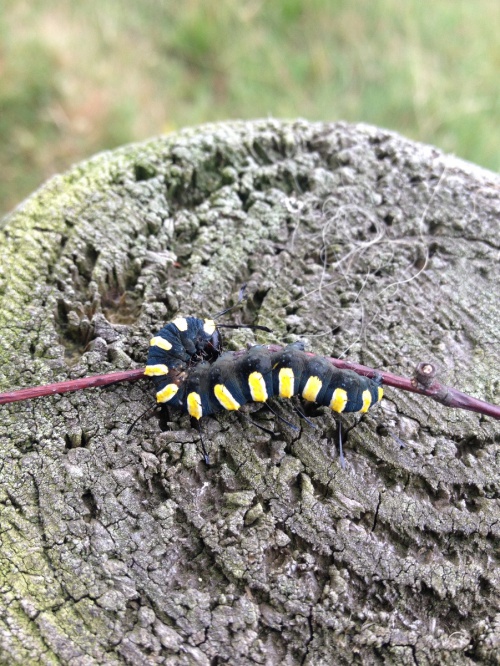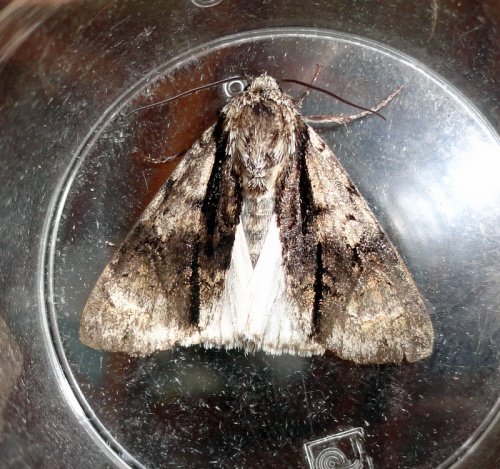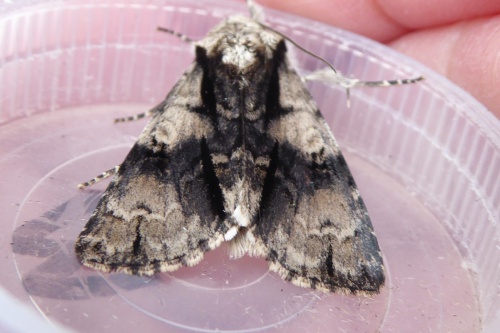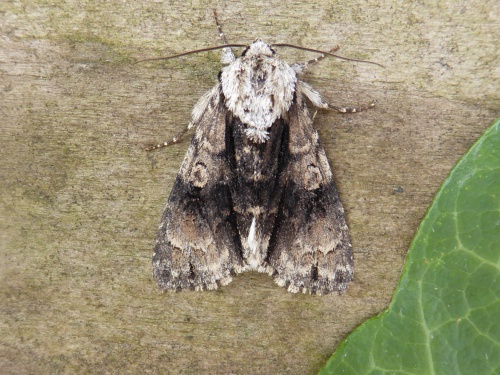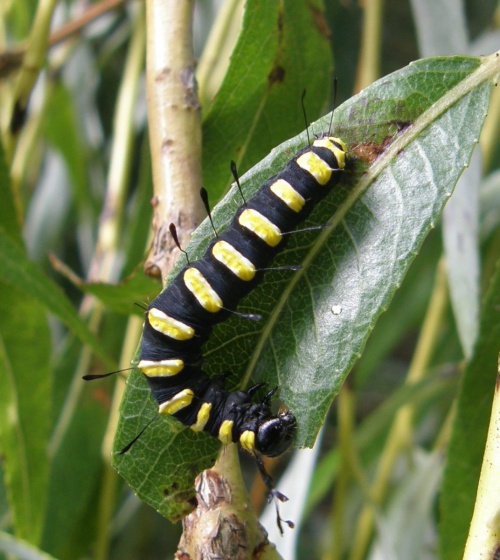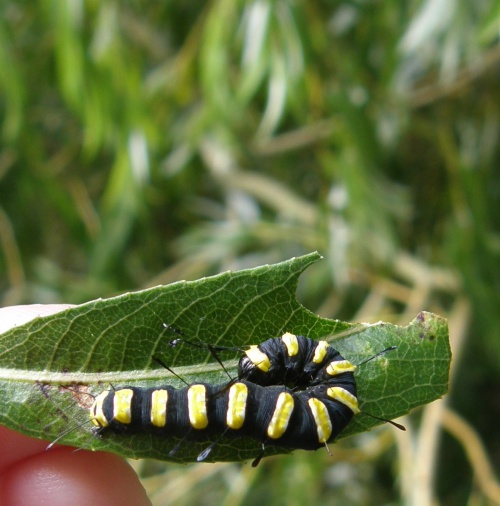Alder Moth - Acronicta alni
Wingspan 33 to 38 mm. This subtly-marked species varies less than some of its congeners, but melanic forms do occur in places.
Damper areas around Alder and wooded areas containing Birch.
The adults appear in May and June and are attracted to mercury vapour light. Prior to the use of this trapping method, the species was considered quite rare, as it seldom comes to sugar or flowers.
The larva when young resembles a bird dropping, but when mature is highly distinctive, being black and yellow with a number of club-like hairs. It feeds on a number of different trees, particularly Alder and Birch.
Thinly scattered over most of England and Wales. In a recent survey to determine the status of all macro moths in Britain this species was classified as local.
Fairly frequent but not common in Leicestershire and Rutland. L&R Moth Group status = B (scarce resident or restricted distribution or regular migrant).
Leicestershire & Rutland Map
Enter a town or village to see local records
MAP KEY:
Yellow squares = NBN records (all known data)
Coloured circles = NatureSpot records: 2020+ | 2015-2019 | pre-2015
UK Map
Species profile
- Common names
- Alder Moth
- Species group:
- Moths
- Kingdom:
- Animalia
- Order:
- Lepidoptera
- Family:
- Noctuidae
- Records on NatureSpot:
- 34
- First record:
- 27/07/2002 (Skevington, Mark)
- Last record:
- 23/07/2022 (Graves, Hazel)
Total records by month
% of records within its species group
10km squares with records
The latest images and records displayed below include those awaiting verification checks so we cannot guarantee that every identification is correct. Once accepted, the record displays a green tick.
In the Latest Records section, click on the header to sort A-Z, and again to sort Z-A. Use the header boxes to filter the list.


